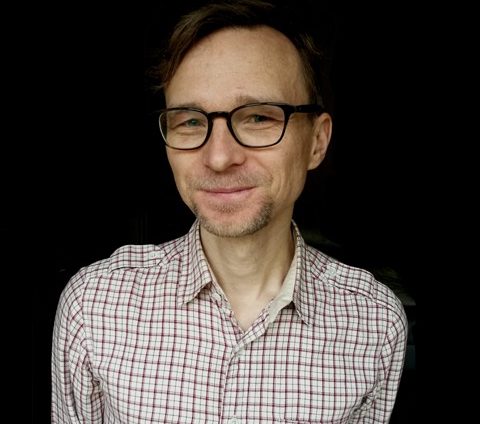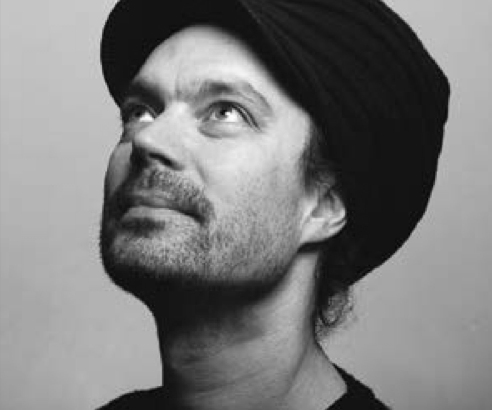What’s Visible – the mechanics of i-docs
Richard Misek – The interactive timeline
Adnan Hadzi – after.video: displaying video as theory and reference system
The interactive timeline
This presentation explores the structural tensions between narrative and navigability
in interactive documentary by focusing on the role of the on-screen timeline.
The challenges of mapping \ onto space extend at least as far back as the Middle
Ages, when historical genealogies appeared in visual forms including branches of a
tree and rivers. However, the timeline as we know it – a straight horizontal line
whose length precisely measures a given duration – only dates as far back as charts
designed by Thomas Jefferys and Joseph Priestley in the mid-17th century
(Rosenberg & Grafton 2010). Over recent decades, the horizontal timeline has
further evolved into a pervasive technological and conceptual framework for the
making and viewing of moving images. From the sequence window of ‘non-linear’
editing software to the play bar of online videos, the horizontal timeline shapes how
we engage with video. It also encapsulates the paradox of interactive documentary:
always just a swipe away, it is metonymic of the hegemony of linear narrative in
contemporary media, yet it also makes possible non-linear navigation through
moving images.
Using examples including the interactive documentary Filming Revolution (Alisa
Lebow, 2015) and the VR artwork Timescrubbing (Rachel Rossin, 2016), this paper
explores different ways in which timelines have informed the structure of interactive
nonfiction, and how they can also be used by film-makers and artists to disrupt linear
narrative. The paper concludes by exploring how the concept of the timeline applies
to virtual reality, and how the gesture-based interactive toolset of VR may make
possible works that follow a predetermined narrative trajectory but still allow real-time
interaction. It does so with reference to research currently being carried out by the
author and VR studio Vrtov on the interactive documentary Cinema Unframed, which
aims to use gesture as a tool for temporal navigation through moving images.
References
Rosenberg, Daniel, and Anthony Grafton. 2010. Cartographies of Time: A History of
the Timeline. Princeton N.J.: Princeton Architectural Press.
after.video: displaying video as theory and reference system
After video culture rose during the 1960s and 70s with portable devices like the Sony Portapak and other consumer grade video recorders it has subsequently undergone the digital shift. With this evolution the moving image inserted itself into broader, everyday use, but also extended it s patterns of effect and its aesthetical language. Movie and television alike have transformed into what is now understood as media culture. Video has become pervasive, importing the principles of “tele-” and “cine-” into the human and social realm, thereby also propelling “image culture” to new heights and intensities.1 YouTube, emblematic of network-and online-video, marks a second transformational step in this medium’s short evolutionary history. The question remains: what comes after YouTube? How might we understand a time when global bandwidth and multiplication of – often mobile – devices as well as moving image formats “re-assemble” both “the social”2, as well as the medium formerly-known-as video itself? What is one supposed to call these continuously re-forming assemblages? Or: how should one name the ubiquitous moving images in times when they are not identifiable any more as discrete video “clips”? Are we witnessing the rise of Post-Video? Extended video? To what extent has the old video frame been broken?
This paper discusses the use of video as theory in the after.video project6, reflecting the structural and qualitative re-evaluation it aims at discussing design and organisational level. In accordance with the qualitatively new situation video is set in, the paper discusses a multi-dimensional matrix which constitutes the virtual logical grid of the after.video project: a matrix of nine conceptual atoms is rendered into a multi-referential video-book that breaks with the idea of linear text. read from left to right, top to bottom, diagonal and in ‘steps’.
Unlike previous experiments with hypertext and interactive databases, after.video attempts to translate online modes into physical matter (micro computer), thereby reflecting logics of new formats otherwise unnoticed. These nine conceptual atoms are then re-combined differently throughout the video-book – by rendering a dynamic, open structure, allowing for access to the after.video book over an ‘after_video’ WiFi SSID.


